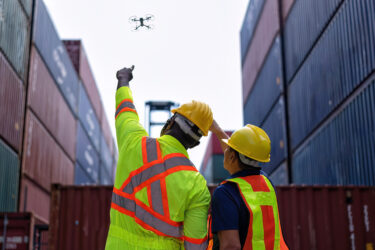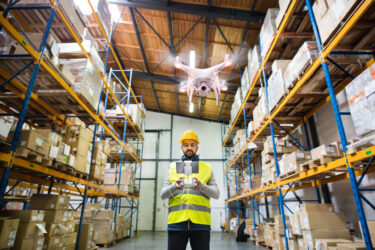

Not that long ago, farmers were being told to plant crops based on what they thought would be successful. Today, there’s an entire industry of data analytics that is revolutionizing agriculture. Did you wonder what is agricultural software and do we need it?We looked at a few ways in which agriculture can utilize farm management software to enhance planning, speed decisions, and most importantly, improve outcomes. After reading this article you will become familiar with agricultural technology and all there is to know about it.
- What is agriculture management software?
- What software is used for agriculture?
- What does farm management software do?
- Do farmers use management software?
- What makes agriculture software so important?
- What are examples of agricultural technology?
- What are the 4 ways of using big data analytics in agriculture?
- What are the benefits of agricultural software?
- Key takeaways in the topic of agriculture software
What is agriculture management software?
An agricultural software is a comprehensive solution for farm management and tracking all crop planning. With it, farmers can manage their workflows anytime and anywhere and access real-time data, which help them tasks such as:
- livestock management,
- pest control,
- record-keeping,
- finding optimal harvesting time,
- risk management,
- and loss prevention.
Thanks to the farm management system, farmers can monitor their performance and understand what changes should be made to improve their business. In addition, they have a better understanding of farm equipment and labour management. In this way, farmers can make data-driven decisions in a shorter period and increase their chances of being right. Agriculture design software is primarily used to keep field operations in complete control and align them with regulatory compliance.
What software is used for agriculture?
There is a wide array of software and apps available to farmers on the market. However, a growing number of farmers are turning to cloud-based solutions as they offer enough storage, speed, and computing power for processing the data and packaging it in a way that farmers can use. However, utilizing the cloud for the agricultural sector is not without challenges. A large company’s cloud solutions are typically expensive, and small-scale farmers have difficulty affording them.
Aside from that, many cloud solutions are designed for large farms equipped with fast internet connections. And as we all know, most rural farms have slow connections or have no connectivity at all. This means they cannot take full advantage of the possibilities this solution offers.Farmers also worry about their privacy and security, namely that someone who somehow gains access to their information could discover their farming strategies.
But, of course, their fear is not supported by any evidence that such a thing could happen. Nevertheless, cloud computing has a bright future in farming – it can be used to combine software with other types of data and improve such variables as quality, profitability, and sustainability.
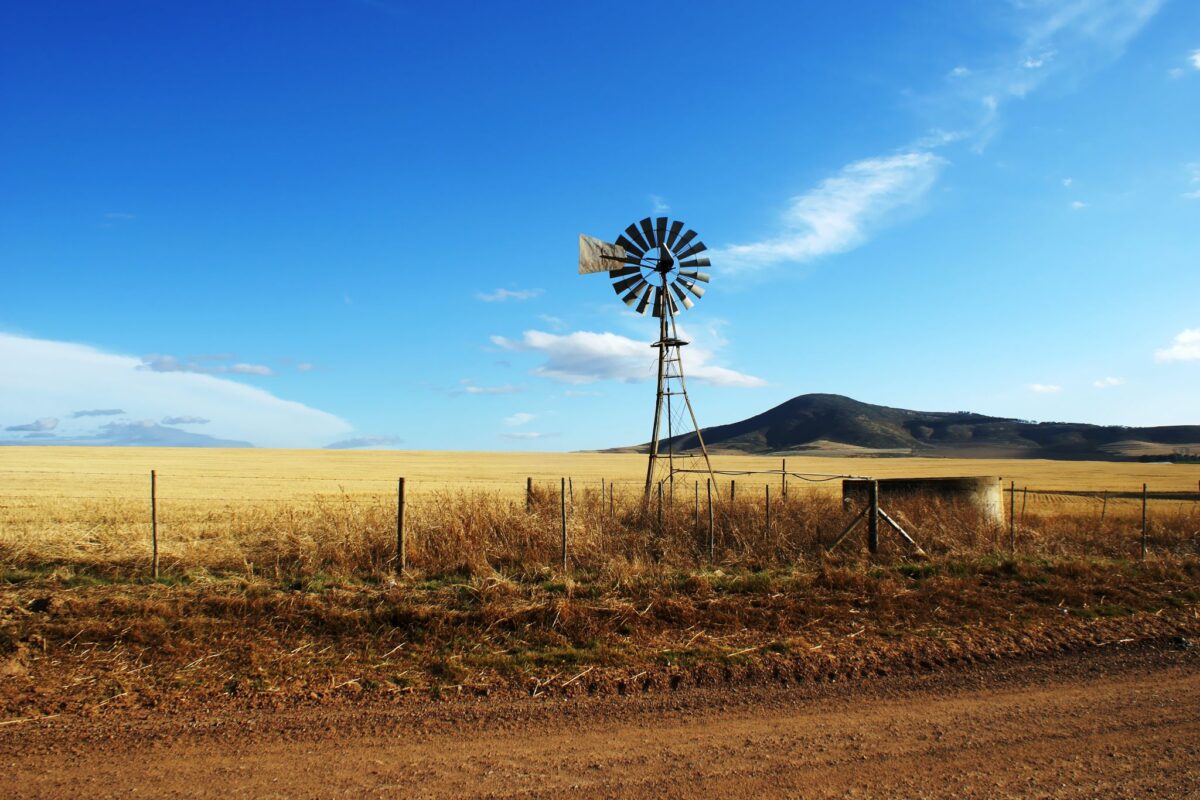
What does farm management software do?
A modern software farm tool is grouped according to the scope of tasks it fulfills. To even classify the tool as agriculture software development, it needs to perform the following functions:
- Enables tracking and analysis of day-to-day operations and activities on a farm,
- Have features that improve a farm’s production efficiency and profitability (e.g. irrigation software),
- Crop management is available,
- Allows for tracking and managing workers’ progress and streamlines the communication and collaboration between them,
- Creates connected agriculture software with other tools.
Agricultural software should be a comprehensive tool that handles the most critical tasks involved in farming. Thus, it should result in the improved flow of information, increasing the farm’s productivity.
Do farmers use management software?
Long story short: big data analytics is changing the way farmers do their jobs. In the thousands of years since agriculture began, there has not been a transformation like one brought by big data analytics. It is a revolution that is sweeping the agricultural sector at an unprecedented rate since we can apply it to a wide range of aspects, from crop rotation to animal welfare. Farmers introduced precision engineering and new information technologies alongside agricultural practices with GPS technology.
After that, they embedded sensor networks in farm fields to collect environmental and soil data on crops such as moisture levels, temperature variations, and nutrient content, all crucial to determining irrigation requirements, fertilizer levels, or seeding rates. Next came big data analytics.
What makes agriculture software so important?
Thanks to crop production history analysis, agricultural software is transforming the way farmers do their jobs in a big way, allowing them to make better decisions and use less water, fertilizer, or pesticide. As a result of big data, farmers can obtain timely information about pests and weed outbreaks, allowing them to apply pesticides only once instead of multiple times during the growing season.
Crop management software impacts all aspecs of agriculture. It spans the entire spectrum of farm yield optimization, food safety management, supply chain visibility, and global trade policy analysis; to animal welfare policy. It has all been accomplished using machine learning algorithms to identify at-risk animals early enough to monitor their health, based on predictive models mapping out potential sources of infection on cattle farms in Europe.
The use of agricultural software by farmers is aimed at increasing yield. Big data is a term used to describe large datasets that are gathered from different sources, including satellites, sensors on tractors, and livestock tags. These datasets provide a great deal of information about agricultural production without requiring extensive manual labor. All of this is taken into account, from soil conditions to weather patterns to fertilizer levels.
Sometimes, these big data sets may also contain precise geographic coordinates associated with each piece of information captured by the sensor networks, which allows for detailed analysis at this level as well.
What are examples of agricultural technology?
Farmers can choose from a variety of technology available on the market. All agriculture software solutions come down to the same thing – improving the performance of farms through enhanced productivity. Before making a decision, farmers should weigh all pros and cons of different options. Many factors influence the final decision, such as budget or the farmer’s priorities, or just the farm’s day-to-day operations. Let’s take a closer look at each of these.
Agriculture drone software
With the aim of drones, agriculture drone software can create digital surface models of a farm, which help in measuring and tracking the area and helping with its evaluation. Farmers can use that information to get a big picture of the terrain and livestock. This also allows for the precise collection of crop data on-demand. The use of drones for agricultural purposes is a cost-effective alternative to using satellite imagery and aircraft. Besides monitoring and evaluating, drones can spray crops with pesticides and fertilizers.
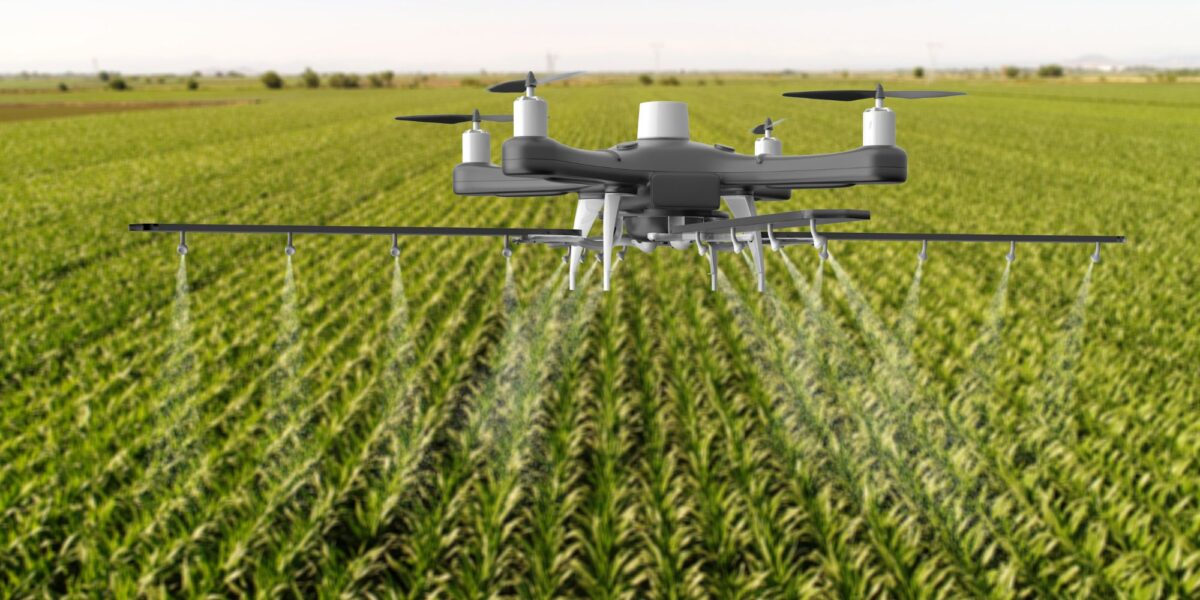
Agriculture accounting software
Accounting software for agriculture is typically part of a larger package, but some programs cover just this aspect of farming. With one platform, farmers can manage their financial flow, track crop cost accounting, all expenses, salaries, and profits, and create complex financial reports.
Agriculture mapping software
Agriculture mapping software can use drones or satellites to collect all the valuable data. It helps to take appropriate actions for a more productive season. Such a solution streamlines scouting and pinpoints potential stress and helps to detect any issues quickly. It gives insight into field vigour before you can see it on plants.
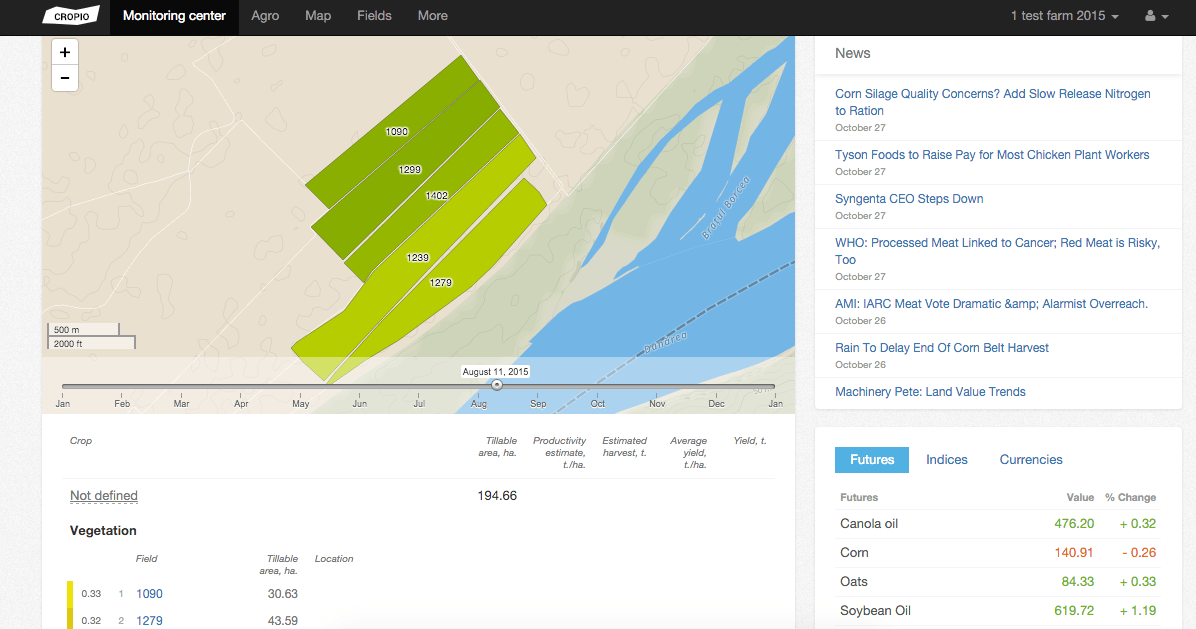
Source: saasgenius.com
Agriculture management software
Agriculture management software is an all-in-one solution. It centralizes, manages, and optimizes farm production activities and operations. In addition, it automates and stores farm data, monitors and analyzes farm activities and consumption, and keeps track of business expenses and farm budgets. Its purpose is to streamline farmers’ workflow and provide them with the easiest (yet still advanced) solution to use.
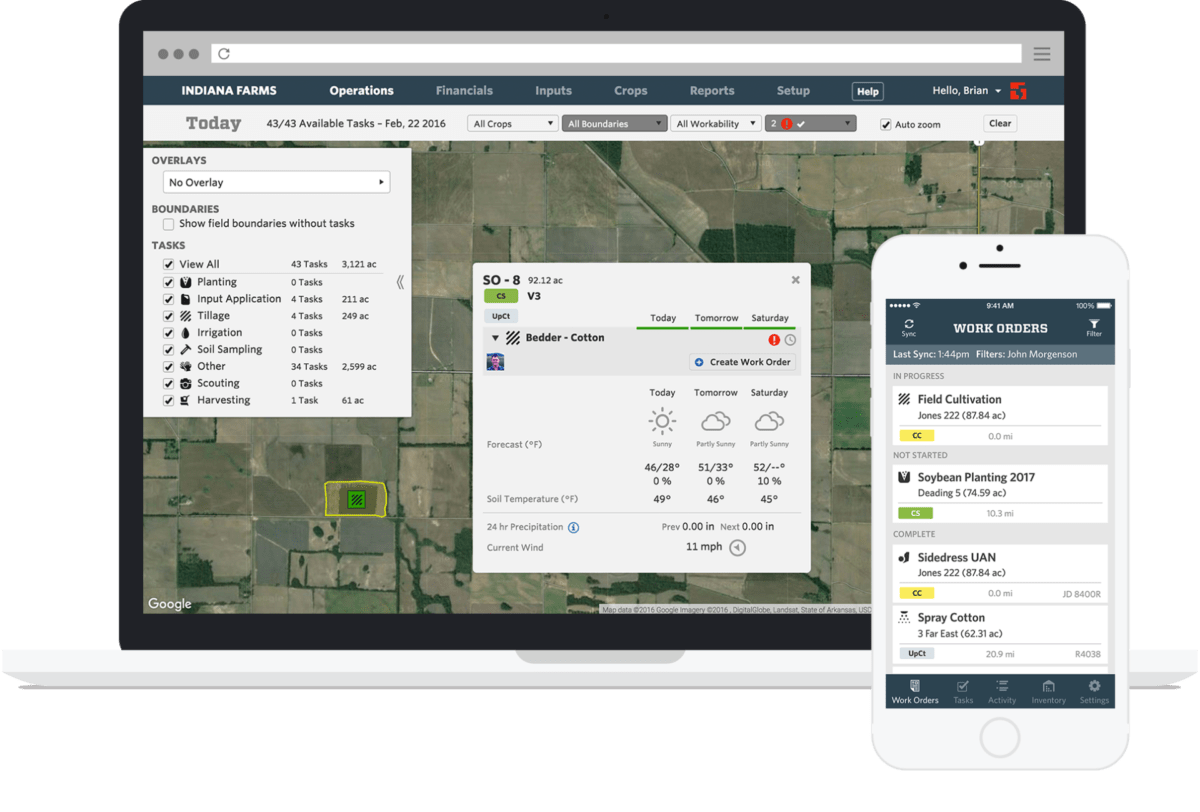
Precision agriculture software
Precision agriculture (PA) is an approach to farm management that utilizes information technology (IT) to make sure crops and soils are receiving all the nutrients they need to thrive. It’s the solution that mainly combines all the technology mentioned above. In the past, precision farming was limited to more extensive operations; today, precision agriculture software is also available for small family farms. That’s why it has become increasingly popular in recent years.
What are the 4 ways of using big data analytics in agriculture?
Managers and farmers are learning about their fields more fully thanks to big data. Analyzing, collecting, storing, and visualizing data all contribute to the process. Agriculture software, using efficiently, can lead to more yield from crops and better livestock management.
1. Data collection and analysis in agriculture
Agriculture is one of the key areas of big data analytics where the collection and analysis of data plays an important role. Farmers are using software solutions to monitor their crops and livestock while increasing efficiency, which has led to the agriculture industry developing a lot over the past few years. Instead of guessing what crops will grow best (based on experience and maybe some data), farmers can now determine when to plant their land for optimum and profitable yields.
Farmers then can plan when to harvest and health check their cattle before diseases spread throughout the herd; and managers can determine which cows need attention before any disease spreads. Data has revolutionized not just agriculture or animal care; big data helps measure livestock placement as well, helping farmers to more effectively manage their assets.
2. Data monitoring in agriculture
Field sensors measure light intensity, sounds from insects chewing leaves at night (caterpillars), nitrogen fertilizer application rates, etc. This data determine future planting conditions. Big data systems analyze collected data through automation and remote monitoring to figure out how to fertilize and what makes crops grow.
Farmers can save time and increase their yields this way. Big data systems analyze collected data through automation and remote monitoring to figure out how to fertilize and what makes crops grow. Farmers can save time and increase their yields this way.
3. Data management systems and storage in agriculture
Managers of agricultural operations can also benefit greatly from big data analytics systems. By knowing when to spray or harvest, how much grain to store for future needs, and so forth, they enable farmers to manage their operations more efficiently. Big data analysis, for example, can help managers know if they need to buy new equipment before it’s too late. In order to decide where to plant crops, farmers need to know as much about their environment as they do about themselves.
Using big data and new environmental factors, big data systems can predict what crops will grow most successfully based on variables like how much rain fell and temperature. By using big data to predict future grain demand, farmers can better manage livestock management as well. Agricultural companies aren’t the only ones it benefits–individual farmers, too.
4. Data visualization in agriculture
Systems that use big data can also visualize big data into easy-to-understand charts and graphs. For the farmer or manager who is simply looking for an overview of the state of their fields, this is very handy-instead of wasting hours trying to sort through large volumes of raw and unprocessed information, they can get it all at their fingertips.
What are the benefits of agricultural software?
We’ve mentioned several times here that farming is no longer the same as it used to be thanks to agricultural software and IoT-enabled solutions. Technology has revolutionized agriculture and brought many solutions that farmers just a few years ago couldn’t imagine. They no longer have to rely just on their intuition, and they can back up their knowledge with data that helps them make effective decisions.
Using technology and agricultural software has streamlined farmers’ work and provided many other advantages. Which one?
- Allows for optimal use of water, pesticides, fertilizers,
- Increases work safety,
- Better water and groundwater protection from chemical run-off,
- Reduce the impact of farming on the environment,
- Enhance crop productivity,
- Simplify the whole process of harvesting,
- More reliable monitoring of quality
- Greater control over plant and animal production, distribution and storage,
- In the end, we gain safer food that grows in safer conditions.
Agriculture software brings much more benefits than the above. Furthermore, it supports aspects of engineering, computer science, and physical science research and development. These software programs assist and instruct farmers on using new technologies, so they don’t need to worry that they will have to implement all of these on their own. In addition, it is in the interest of these companies to utilize these technologies economically and with a minimum of disruption to the farm’s current practices.
Key takeaways in the topic of agriculture software
Big data analytics and software enhanced agriculture, which offers managers the ability to predict when machinery will break down and where crops will grow best based on various factors. With agriculture software, farmers can integrate past information with current environmental variables like temperature or rainfall, as measured by field sensors. This was difficult for plant scientists in the past, but big data simplifies it.
Agriculture is not the only industry experiencing the big data revolution. Tourism and manufacturing are also experiencing it, and may be tightly connected with agriculture. Business practices have changed because it makes finding new customers and partners easier and has enabled new industries–the sharing economy, for instance–to emerge. Big data and dedicated software revolutionized many aspects of agriculture, from planning future farms with precision to analyzing crop yields across different regions and making better decisions accordingly to predicting prices of goods based on trends in demand.
New developments in agriculture software are changing the way we do farming, and the trend will continue.
For more publications on software developments and all-things technology, head over to our blog section, where you will be able to find many insightful pieces of knowledge. DAC is one of the partners in AFarCloud R&D project focusing on novel solutions for modern farming.
AFarCloud has a budget of EUR 16.6 million and 59 participants from 14 countries. AFarCloud will provide a distributed platform for autonomous farming that will allow the integration and cooperation of agriculture Cyber-Physical Systems in real-time in order to increase efficiency, productivity, animal health, food quality, and reduce farm labor costs. The project has received funding from the ECSEL Joint Undertaking (JU). Grant agreement No 783221.



